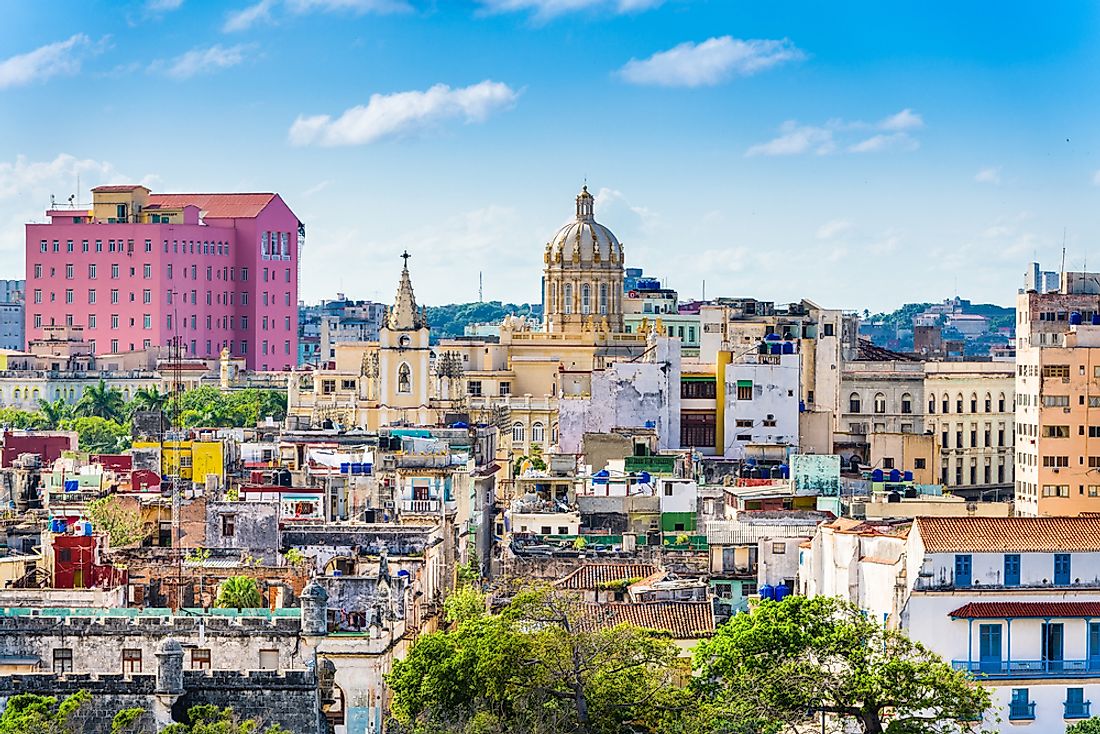Is Cuba Part of North America?

Cuba is a country composed of the principal island of Cuba, Isla de la Juventud, and several archipelagos. The exact location is the northern Caribbean region at the meeting point of the Caribbean Sea, the Atlantic Ocean, and the Gulf of Mexico. The capital city is Havana with other large cities being Camagüey, Holguin, Guantánamo, and Santiago de Cuba. Cuba is classified as a North American country. There is evidence of the affiliation to North America in matters of trade activities and membership of Cuba in various trade blocs in the continent. Cuba has always participated in the sports and games of other countries in North America such as baseball, football, and boxing.
Geography
Cuba is a combination of various islands found in the northern Caribbean Sea. The principal island of Cuba is 780 miles long and occupies 40,369 square miles. It is the largest island in the Caribbean region and the 17th largest in the world. When Cuba's mainland and the minor islands are combined, they occupy 42,803 square miles including the territorial waters. The terrain of Cuba consists of a vast region of flat rolling plains. The highest point is the Sierra Maestra Mountains which stand at an elevation of 6,476 feet. The United States is 93 miles to the north side once you cross the Florida Straits. Cuba shares a maritime border with the US states of Bahamas and Florida to the north. Mexico is 130 miles to the west side while Haiti is 48 miles east of Cuba. The Cayman Islands and Jamaica republic lies 87 miles and 140 miles to the south respectively.
Government and Politics
Cuba is a socialist country that strictly follows the Marxist-Leninist ideology. The 1992 constitution works on principles of José Martí including the social and political ideas of Engels, Marx, and Lenin. The Communist Party is the “leading force of society and of the state” The president is elected by the national assembly for a five years term. The constitution allows one to run for presidency for an unlimited number of times. The president is the First Secretary of the Communist Party and President of the Council of State. The judiciary is headed by the Peoples Supreme Court. The legislative arm is known as the National Assembly of People’s Power.
Demographics
The fertility rate in Cuba has gone down in the last few years making the country have one of the lowest birth rates in the Western Hemisphere. The composition of people is made up of multiethnic people due to colonial history and the intermarriages of diverse groups. The racial composition has been contributed to immigration and emigration both in the pre and post-revolution era. The dominant religion is Christianity, specifically Roman Catholic. Spanish is the official language while Haitian Creole, Galician, and Corsican are other common languages.
Economy
Guided by socialist principles, the economy is planned and controlled by the state. Factors of production are owned and managed by the state including labor force. Although Cuba is embracing the private sector, the government is still in the lead in production and manufacturing. Cuba is among the few countries where a dual currency is acceptable. Salaries, wages, and prices of commodities are in Cuban Pesos (CUP) while tourism transacts with convertible pesos which are set in relation to the US dollar. Most of the household items are provided for by the government using "libreta" (ration book) at the nominal cost. Major export commodities are fish, medical products, citrus fruits, sugar, tobacco, nickel, and coffee. Export countries include China, Canada, Venezuela, Spain, and the Netherlands. Debt levels are over 13 billion US dollars making Cuba a credit accounts dependent country.











